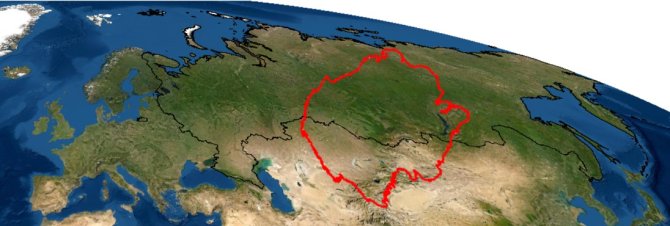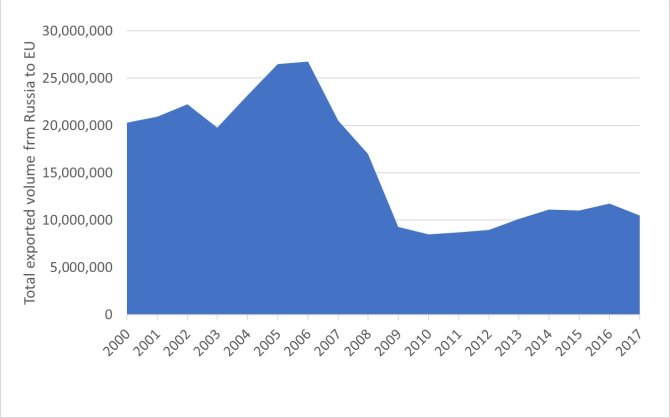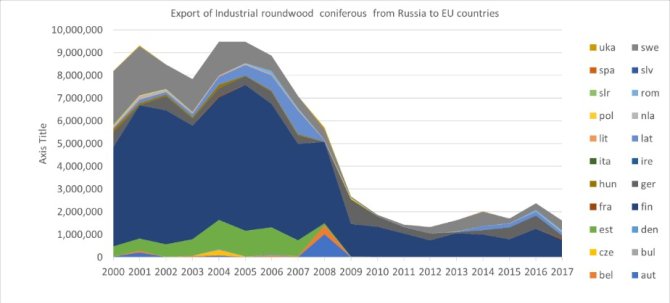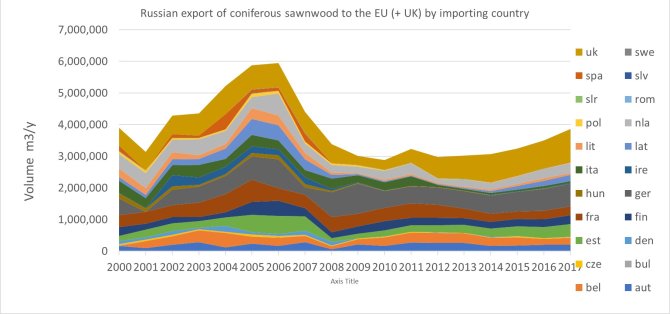
News
Does the EU depend on Russia for its wood?
With the Russian-Ukrainian war going on for almost 2 weeks now, it becomes apparent how much the EU is depending on Russia for its oil and gas supply. Alternative sources and new forms of renewable energy supply will have to be developed even faster.
But Russia does not only have large fossil reserves, it is also sitting on by far the largest forest in the world. With around 815 million ha of forest it almost doubles the Brazilian Amazon and amounts to about 25% of total global forests. Now with the ban on trade with Russia, the question comes up: how much wood and wood products is the EU importing from Russia and can we do without it? Gert-Jan Nabuurs, professor of European Forests at WUR, has been looking into this question, together with WUR-researchers Bas Lerink, Silke Jacobs and Nicola Bozzolan.

Wood from European forests
To answer this question, the researchers looked at total consumption of wood and wood products in the EU, amounting to nearly 500 million m3 of wood and products per year. This consumption has steadily increased over last decades with shifts between commodities and ups and downs with the economic growth rates. But very important: ~80% of this comes from the own European forests. Some 10% comes from North-American continent, some 8% from S-America (mostly pulp from Eucalyptus). Less than 0.2% of total consumption is tropical hardwoods. With currently some 10 million m3 of imports from Russia to the EU, this is only around 2% of the total consumption (Figure 1).

Trade relations
One clear conclusion can therefore be drawn: the EU does not depend on Russia for its wood supply. According to the researchers, there is still more to say about this by looking at importing countries and product groups.
The trade relationship with Russia was previously troubled by the high export tariffs on unprocessed round wood imposed by Russia around 2008. Volumes sharply decreased (aggravated by the economic crisis) and never recovered, as shown in Figure 1. Figure 2 shows the share of industrial roundwood (unprocessed logs) in this by importing country; Finland and Sweden were the major importers of unprocessed roundwood from Russia and suffered the most from post-2008 trade tariffs. These volumes have dropped significantly, but these two countries still import reasonable volumes and will be somewhat affected by the current trade ban.


Potential global player
In all global wood markets studies, Russia always plays a large role as a country that will supply vast amounts of wood in the future. But according to the researchers, Russia has so far never been able to develop this domestically. Logistical problems, poor management and long distances have always kept it from becoming a global player. The quantities of sawnwood in Figure 3 are very small compared to the size of Russia's forests. The fact that Russia never became a very large exporter now seems beneficial to the EU. What this crisis makes clear now is that the EU will become even more dependent on its own forest resources than it already is. This requires investment in good forest management, education, forest expansion and a good balance between biodiversity, carbon sinks and wood provision.
In short, according to Nabuurs, Lerink, Bozzolan and Jacobs, the EU does not depend on Russia for wood supply. But the ban does make the wood balance tighter. The EU needs to invest and manage their forests carefully and gradually increase domestic production, they conclude.